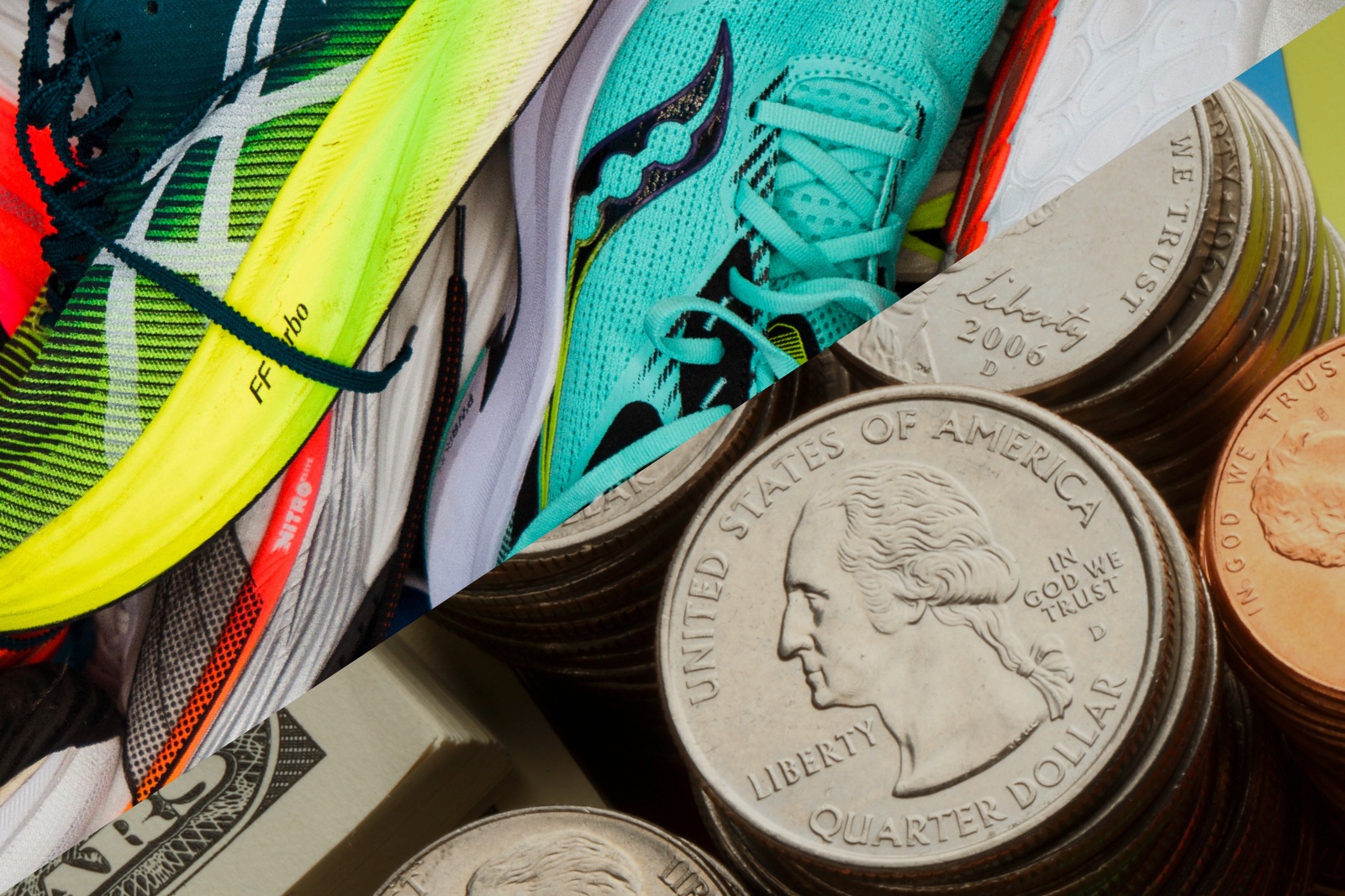
Tips and expert advice on how to run on a budget
We give you insight into the shoes and gear that really matter
Leave them in the comments below
Running is the most affordable, accessible sport, right? Until you start budgeting for $250 racing shoes, performance apparel, a GPS running watch, wireless headphones, a heart rate monitor, fancy sunglasses, etc.. Honestly, you could make running as expensive as you want, thanks to the proliferation of high-end brands like Tracksmith, Saysky, and Satisfy, as well as constantly evolving fitness technology that aims to optimize every step of your workout.
But not every pro is out there breaking world records in carbon-plated racing shoes with proprietary foams; just look at Camille Herron, who set the 48-hour ultra-running World Record in a pair of 10-year-old racing flats. Of course, pro athletes have sponsored deals and get all the free gear in the world, but it’s not always the most expensive gear that helps them break the tape—so if they don’t need it, neither do you.
Still, amateur runners are spending freely. A male runner’s average yearly budget for running was $937, while women spent $1,132 in a 2020 survey by Running Shoes Guru (FWIW, that amount has likely increased with inflation over the past three years). If that math seems out of reach—some of us may have a problem putting a full kit together on that budget—don’t freak out. You can absolutely enjoy the sport for less. Here’s how.

The budget-friendly Reebok Floatride Energy 5 ($110)
Back in 2020, the average budget per pair of running shoes was $103, according to the survey mentioned above. But the average manufacturer’s suggested retail price was $121 in 2021 when the website RunRepeat.com looked at 450 current running shoes. If anyone’s been paying attention, you know that’s gone up since then on account of inflation and supply chain issues.
Last year, footwear prices increased more than in any of the previous 40 years, according to the U.S. Bureau of Labor Statistics. Fortunately, though, shoe prices should level out in 2023. In February, footwear prices were up 0.8 percent over last year, marking the second slowest growth in 23 months, Footwear News reported. The proof is already on shelves: Asics launched the Superblast at $220 in 2022 and recently dropped the price to $200. Even with the historic increase in shoe prices, you can still manage to snag some great shoes under the average price point. Some of the best budget running shoes—including the Adidas Adizero SL, New Balance Propel v4, Saucony Axon 2, Brooks Revel 6, and Puma Velocity Nitro 2—all come in under $120.
Even when you’re not accounting for the ups and downs of the market, running shoes can be a significant investment. You just have to separate yourself from the hype.
“Want” and “need” will determine a lot about how much a runner spends on footwear. Most runners don’t actually need the most advanced racing shoe on social media. Sure, the OG Nike Vaporfly improved the running economy of “high caliber” runners by an average of four percent, a 2017 Nike-funded study determined. And some of those benefits trickle down to us average runners. However, the actual data on performance benefits to non-elites has been mixed.
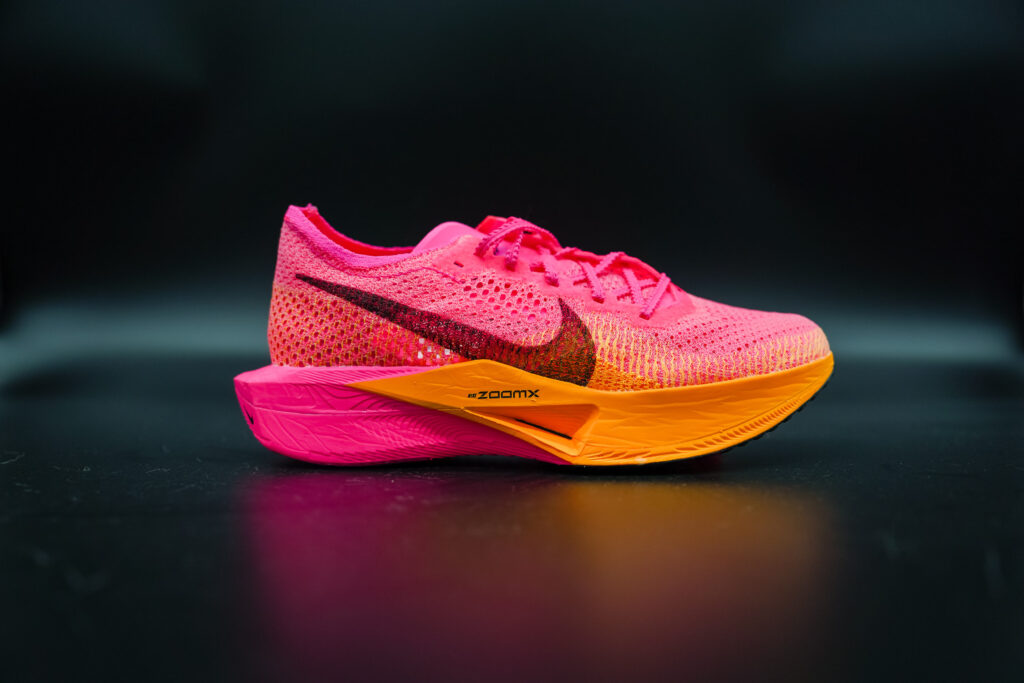
Nike Vaporfly 3
In a new study published in The International Journal of Sports Physiology and Performance, researchers found that the benefits differ depending on your pace. Runners wearing the Nike ZoomX Vaporfly Next% 2 running at a 9:40 per mile pace improved their running economy by less than one percent, on average, while those running an 8:03 per mile pace improved by 1.6 percent.
Point being: You may run faster in a $250, carbon-plated shoe, but you won’t be landing on the podium anytime soon. As anyone who’s ever run a race knows, no matter what shoe you’re wearing, there will always being an AARP-eligible guy in split shorts wearing seven-year-old Brooks who will pass you right at the finish line.
It’s also not necessary to get the newest version of any shoe. While some iterations are complete overhauls (see: the ASICS Gel-Nimbus 25 versus the 24), most updates have minor changes that the average runner might not even notice (the Brooks Ghost 15 mostly differs from the 14 due to lighter DNA Loft v2 cushioning and the amount of recyclable materials). Shoes are generally produced on two-year cycles, so the midsole (i.e. the actual ride of the shoe), remains largely unchanged, while the upper will get an update (since it’s the easiest part to modify).
For this reason, last year’s version of the shoe may be almost identical in construction to this year’s version, and in some cases even better. For example, the Nike Pegasus 39 is better than the Pegasus 40, in our opinion, since the midsole remains unchanged and we prefer last year’s upper. Same for the Hoka Carbon X 2 with its traditional upper over the god-awful knit of the Carbon X 3. Of course, picking up last year’s model can save you up to 50 percent off on some shoes, especially if you’re not picky about the colorway.
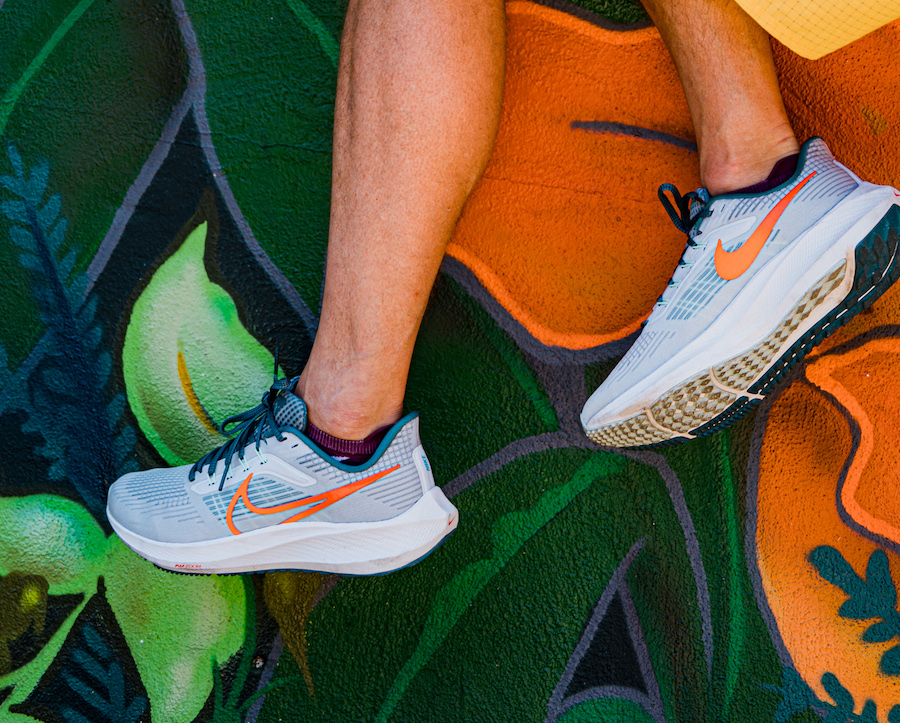
We prefer the Nike Pegasus 39 (and it’s on sale now for $78)
Patience is the key to saving money on running shoes. The launch colorways often go on sale only a couple months after the shoe releases (this is especially true with Nike). If you’re set on a specific sneaker but don’t want to pay the launch price, shopping the previous season’s collection, which is typically released six months earlier, can save you an average of $19.26, an April 2021 data analysis by RunRepeat.com found.
FYI: Prices are generally lowest in June, since many shoes are released in January and prices were found to be lowest 164 days after release, according to RunRepeat.com, but to save an average of 10 percent, you only have to wait 106 days from launch to purchase.
And if you can afford to get two pairs (not necessarily in one go), do it. Runners who switched between two different pairs of running shoes had a 39 percent lower risk of running injury than those who almost always ran in the same shoes, longstanding research in the Scandinavian Journal of Medicine & Science in Sports shoes. Plus, alternating shoes can double the amount of time you get before having to purchase another.
Hey, if you want to go full-on ‘80s gym-coach running style with old mesh gym shorts and a cotton tee, then go for it (just be prepared for chafing). But having a few key pieces of running apparel designed with performance technology like moisture-wicking polyester blends and antimicrobial odor-control materials can help you enjoy your runs more while avoiding any discomfort.
It’s true—we are living in a peak moment of runner fashion, and some brands’ technical high-performance fabrics can cost more than your phone bill (see: Soar half tights start at $110, and Bandit Running performance singlets are $125). But once certain brands nail down the technology, there is a trickle-down effect where those high-performance elements start to show up in more budget-friendly pieces. Nike’s Dri-Fit technology, for example, can be found in the brand’s pinnacle racing gear, like the $90 Dri-FIT ADV AeroSwift, as well as more affordable tanks, like the $45 Ready Dri-FIT Fitness Tank. The former combines the moisture-wicking fabric with body-mapped engineering, while the latter is integrated into a more simple breathable mesh.
There can also be a benefit to shopping department stores, where brands sell different levels of product. That’s why you can shop most major brands at big-box retailers like Kohl’s, Dick’s Sporting Goods, and Finish Line. You’re probably not going to find the latest Nike Aeroswift singlet or Adidas performance shorts, but if you’re more focused on the logo than the fabric technology, you can likely find yourself a deal.
And, of course, budget-friendly brands like Target and Old Navy have been building up their activewear offerings, and you can find all kinds of affordable running brands online. Just like with shoes, the most important factor in a running kit is comfort—and you don’t have to drop a few Gs to find that.
Running purists will say you don’t need anything besides a kit and shoes. Who wants to be a purist, anyways? Accessories like sunglasses, socks, and watches can help you run more comfortably—and when you feel good, you run good. These accessories don’t have to tip your budget over the top, though.
Skip the gas station shades for classic, Wayfarer-esque sunnies from Goodr and Knockaround—they offer UV400 protection and polarized lenses (essential features for outdoor activities) for $25 to $35, while Tifosi creates some classic styles around the same price point, but with a bit better quality.
They won’t be the same quality and clarity as you’ll find in some of our favorite brands, like Oakley, 100 Percent Vision, Ombraz, and Smith, but you also won’t freak out when your pair of Goodr is left at a group run, crushed in your backpack, or falls off the back of a boat.
Even tech can be affordable. If you love listening to music or podcasts but aren’t willing to risk your AirPods on the run, the Skullcandy Dime 2 Wireless Earbuds and JLab Audio Go Air In-ear Headphones both ring up at $30. Runners spend an average of $126 for a fitness watch or tracker, according to the Running Shoes Guru survey; it may be worth spending a little extra to invest in the Kipchoge-approved Coros Pace 2 ($199) or the Garmin Forerunner 55 ($199), but the Fitbit Charge 5 ($129.99) and the Garmin Venu Sq ($119) are both great options that come in under budget.
There’s plenty of websites out there where you can find a good deal. Sometimes you’ll find it at the top of a Google search result, other times you may have to do some good old fashioned cyber dumpster diving.
Right off the bat, we’ll tell you to check out the Running Warehouse sale section, where you can often find some great deals, especially on last year’s models or less desirable colorways. Especially if you have a larger-than-average foot size.
Past season sites like Backcountry or Moosejaw are also good starting places, but don’t overlook outdoor places like REI Outlet, where you can find some nice deals (like the Merrell Long Sky 2 for $99, one of our favorite trail shoes of 2022).
You would think the biggest savings come on secondary sites, but sometimes the very best deals can be found on the main sites for brands like Nike and Adidas. As far as lowest average prices, June is the best time. However, new models and colorways usually drop in spring and fall, so past season sales generally align with those times. Obviously check around major shopping holidays. During those times, you can find some of the best shoes on the market up to 50% off. This often includes more premium models like the Vaporfly and Prime X Strung.
Don’t forget to stack your discounts. Many sites offer free shipping over a certain amount, and most brands or websites have free member loyalty clubs that entitle you to even bigger discounts (see: Adidas’ AdiClub). You can even shop through credit card rewards programs for extra cash back.
For example, say Adidas is having a spring sale. If you’re an AdiClub member, you can get club points on a shoe that’s already discounted by 40% (like the Adidas Boston 11). If you have a Southwest credit card and shop on Adidas.com, you can get 3 points per $1 through their shopping portal.
Same with REI, where you can get member dividends or 5% back on their credit card, in addition to an entire year return policy.
TL;DR: It all adds up.
For the true deal hunters who love that dopamine hit of a great bargain, it may also be worth it to scour the walls of discount stores like the Nike outlet or past-season retailers like Ross and TJ Maxx. The pickings are slim, but sometimes you can hit an absolute jackpot (we’ve seen people snag the Nike Vaporfly for $70).
Of course, there’s always eBay as well. Here, you’re really going into the wild as you don’t know how many miles a shoe has on it, or even if it’s legit. But if you’re willing to roll the dice, you can sometimes mind some real gems for real cheap. Just cross your fingers they’re not made of cubic zirconia.
Outside of shoes and apparel, runners need very little gear. But, according to the Running Shoes Guru survey, runners spend around $270 on races per year and $328 (for men) to $729 (for women) per year on coaching.
FWIW, runners that pay for coaches have double the annual budget than the average runner. That’s because coaching is an investment that can pay off in dividends: working with a professional helps you train strategically, stay accountable and motivated, and avoid injury and burnout—all of which enable you to run and race more often.
Keep in mind: You don’t have to race multiple events each year, you don’t have to run a marathon (generally the most expensive race distance), and you don’t need a fancy watch or compression boots or a massage gun or a sauna suit to be considered a “real” runner. And if another runner judges you on the type of gear you have, that’s on them—not you.
Of course, you can always get great value in events like our semi-annual GRIT distance challenge. It always sells out thanks to the awesome swag and giveaways, so you’re getting awesome running gear and the chance to be part of a great running community (registration for Summer GRIT opens on Memorial Day, so stay tuned for that.)
While it’s always good to get the most bang for your buck, just remember that sometimes things are cheap for a reason– they’ll wear out more quickly, they’ll accumulate bacteria and smell, and before you know it, they’re in a landfill. Sometimes spending more is spending less, especially if it’s a quality piece of gear that will last years.
For example, merino wool will often cost 2-3 times more more than budget performance wear, but it’s odor repellent, resilient, requires less washing, and is extremely comfortable and versatile as running gear. So while it does cost more, the long-term benefits outweigh lower quality gear. Case in point: We’ve had Tracksmith Brighton Base Layers ($88) that we’ve worn all winter long for the last four years, and they’re still holding up as good as ever. You can’t beat that value.
(And yes, you can even find deals on merino, like this Artilect Flatiron base layer for 40% off).
Also, while it’s great to find bargains on past models, don’t time travel too far back into the past– like all plastics, midsole foams do start to break down after a couple years, even if they’ve just been sitting in a warehouse.
The most important factor to consider when buying running gear is not what the pros are wearing, what your friends are wearing, or what social media’s trying to sell you—it’s whether you feel good wearing it. Price doesn’t indicate comfort, and it also doesn’t guarantee performance. Plus, there’s no better feeling than blowing by some guy in his Alphaflys while you’re wearing your $100 trainers at your local 10K.
Have something to say? Leave a Comment
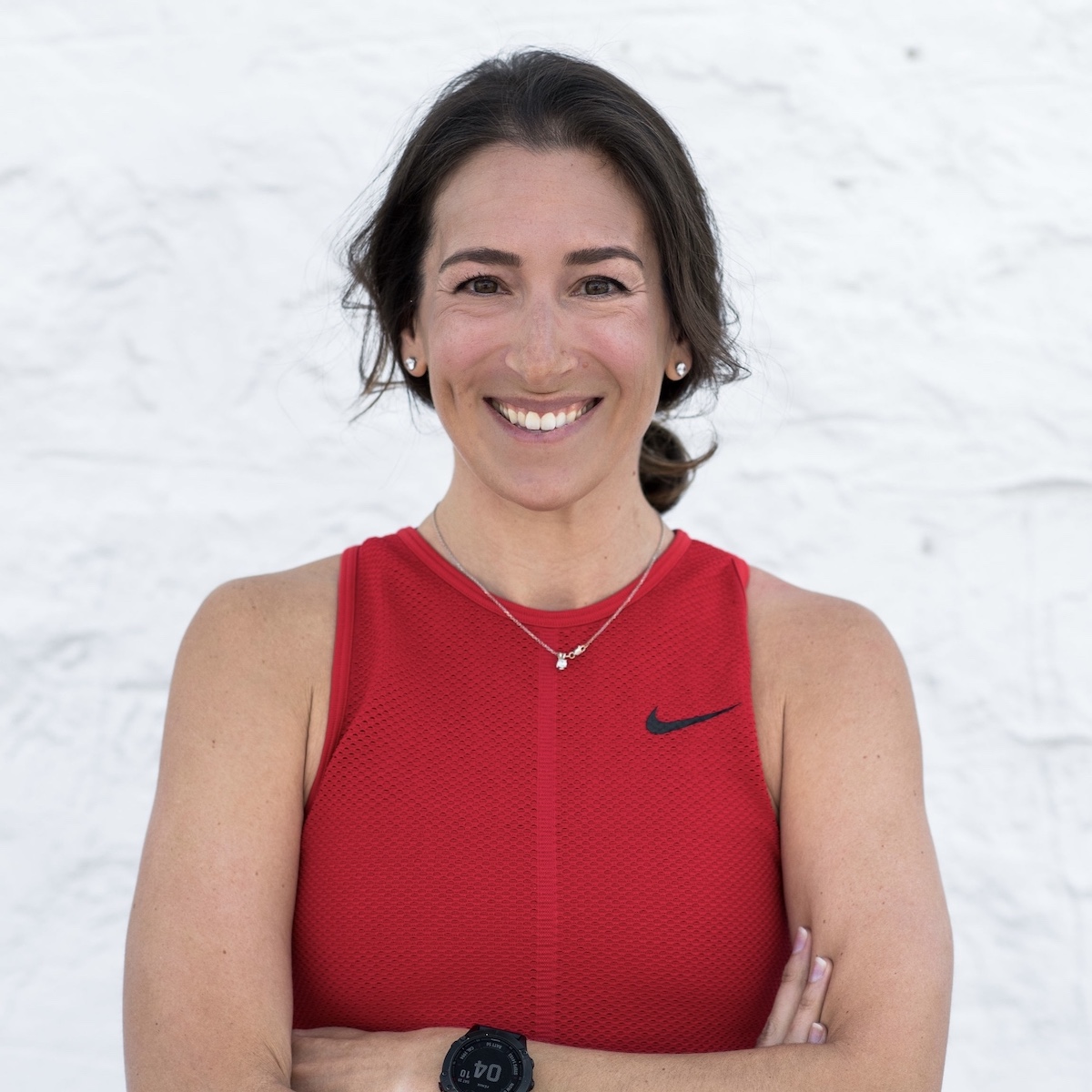
Ashley is an award-winning journalist and editor whose work has appeared in The Wall Street Journal, TIME, Runner’s World, Women’s Running, Men’s Journal, Health, Women’s Health, Bicycling, and more. She’s also an RRCA- and UESCA-certified running coach based in Denver. Her main goal—through writing and coaching—is to make running accessible for everyone, because no matter how fast you are, we’re all just doing this for fun.
More from Ashley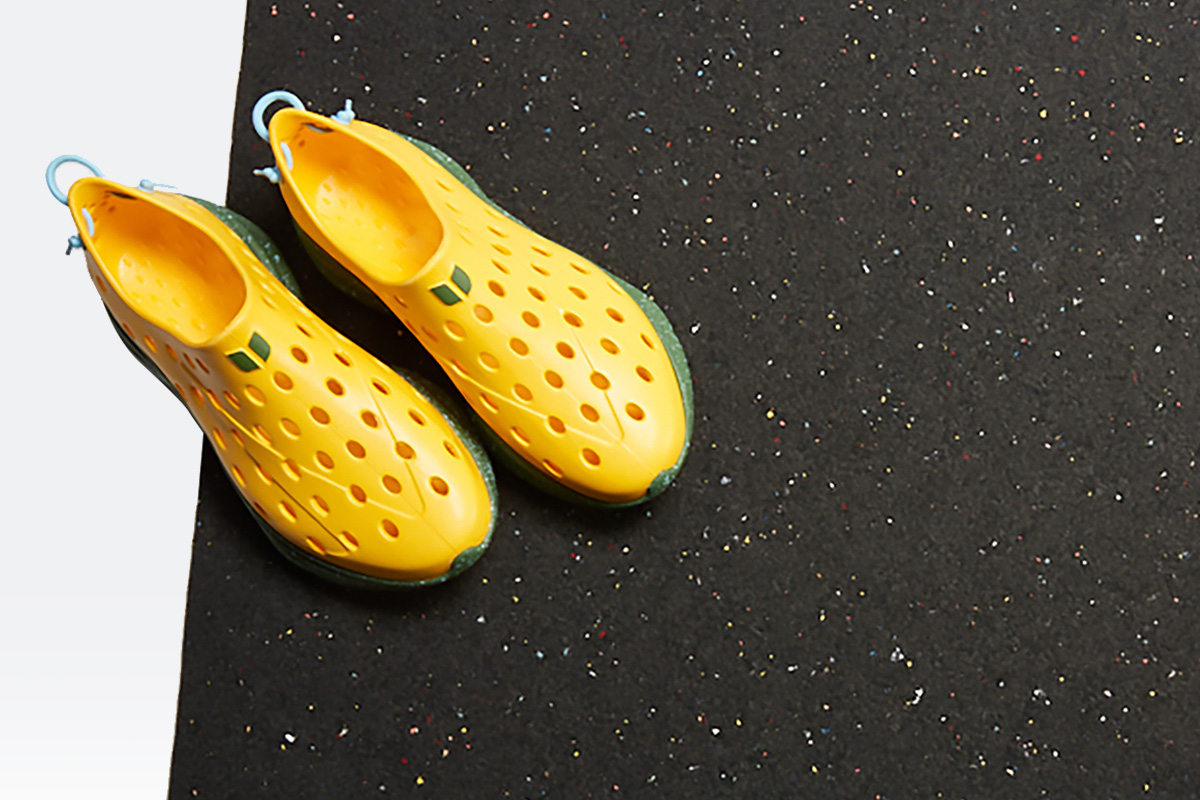

Great article…wish more exercise focused websites had stuff like this.
I got saved by the bell because of this. Lucky to have read this before buying with the hype.